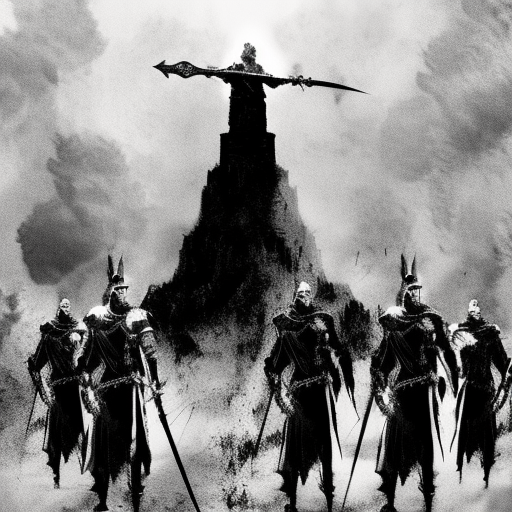One-line summary: “Henry V” is a historical play by William Shakespeare that follows the journey of King Henry V as he leads England to victory in the Battle of Agincourt during the Hundred Years’ War.
The Rise of Henry V
In the play “Henry V,” Shakespeare portrays the transformation of Prince Hal into King Henry V, a charismatic and courageous leader. The story begins with Henry’s ascension to the throne after the death of his father, King Henry IV. Initially seen as a reckless and irresponsible youth, Henry surprises everyone by embracing his newfound responsibilities and proving himself to be a capable ruler. He sets out to reclaim England’s territories in France, which sparks a war between the two nations.
The Battle of Agincourt
One of the most significant events in the play is the Battle of Agincourt, a decisive battle fought between the English and the French during the Hundred Years’ War. Despite being heavily outnumbered, Henry leads his troops into battle with unwavering determination and strategic brilliance. The English army emerges victorious, thanks to their longbows and the French’s tactical errors. This triumph solidifies Henry’s reputation as a great military leader and brings him closer to achieving his goals in France.
The Complexity of Leadership
Throughout the play, Shakespeare explores the complexities of leadership through Henry V’s character. Henry faces numerous challenges, including political intrigue, internal conflicts, and the burden of making difficult decisions. He must balance his desire for conquest with the responsibility of ruling his own kingdom. Shakespeare delves into the moral dilemmas faced by leaders, questioning the legitimacy of war and the sacrifices necessary to maintain power. Despite the weight of his decisions, Henry remains steadfast in his belief that he is acting in the best interest of his country.
Henry V’s leadership style is characterized by his ability to inspire and motivate his troops. He delivers powerful speeches, such as the famous St. Crispin’s Day speech, which rallies his soldiers before the Battle of Agincourt. Henry’s leadership is also marked by his willingness to share the hardships of his men, as he disguises himself and mingles with the common soldiers to understand their concerns and boost morale.
Key Takeaways:
- Transformation: The play showcases the transformation of Prince Hal into a respected and capable king.
- Leadership: Shakespeare explores the complexities of leadership, highlighting the challenges and moral dilemmas faced by rulers.
- War and Conquest: “Henry V” raises questions about the legitimacy of war and the sacrifices necessary for territorial expansion.
- Inspiration and Motivation: Henry V’s leadership style emphasizes the power of inspiration and motivation in achieving success.
“Once more unto the breach, dear friends, once more.”
– King Henry V
In conclusion, “Henry V” is a captivating historical play that delves into the rise of King Henry V and his journey to victory in the Battle of Agincourt. Shakespeare skillfully explores the complexities of leadership, the moral dilemmas faced by rulers, and the power of inspiration and motivation. The play serves as a reminder of the transformative potential of individuals and the challenges they face in the pursuit of power and conquest.












